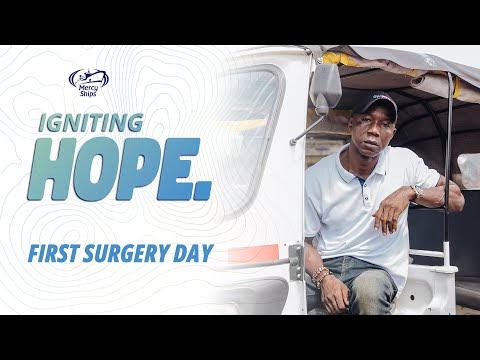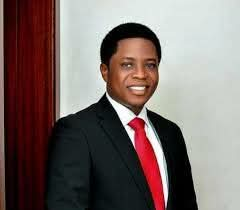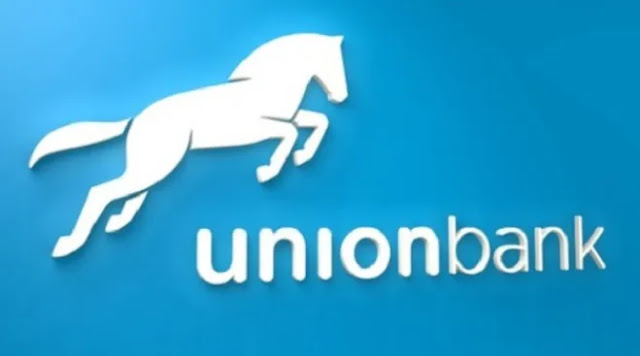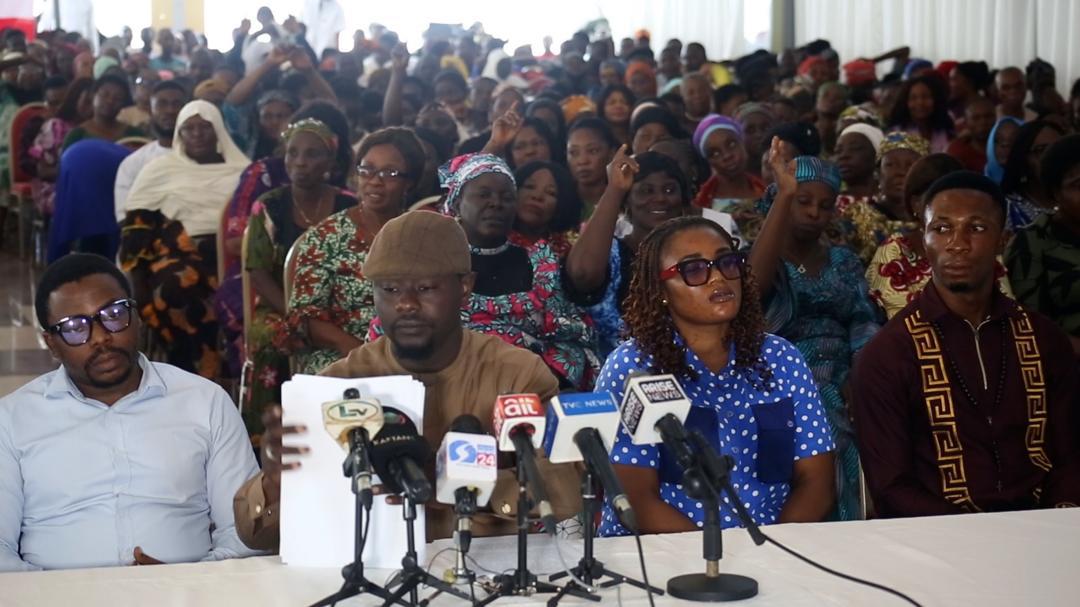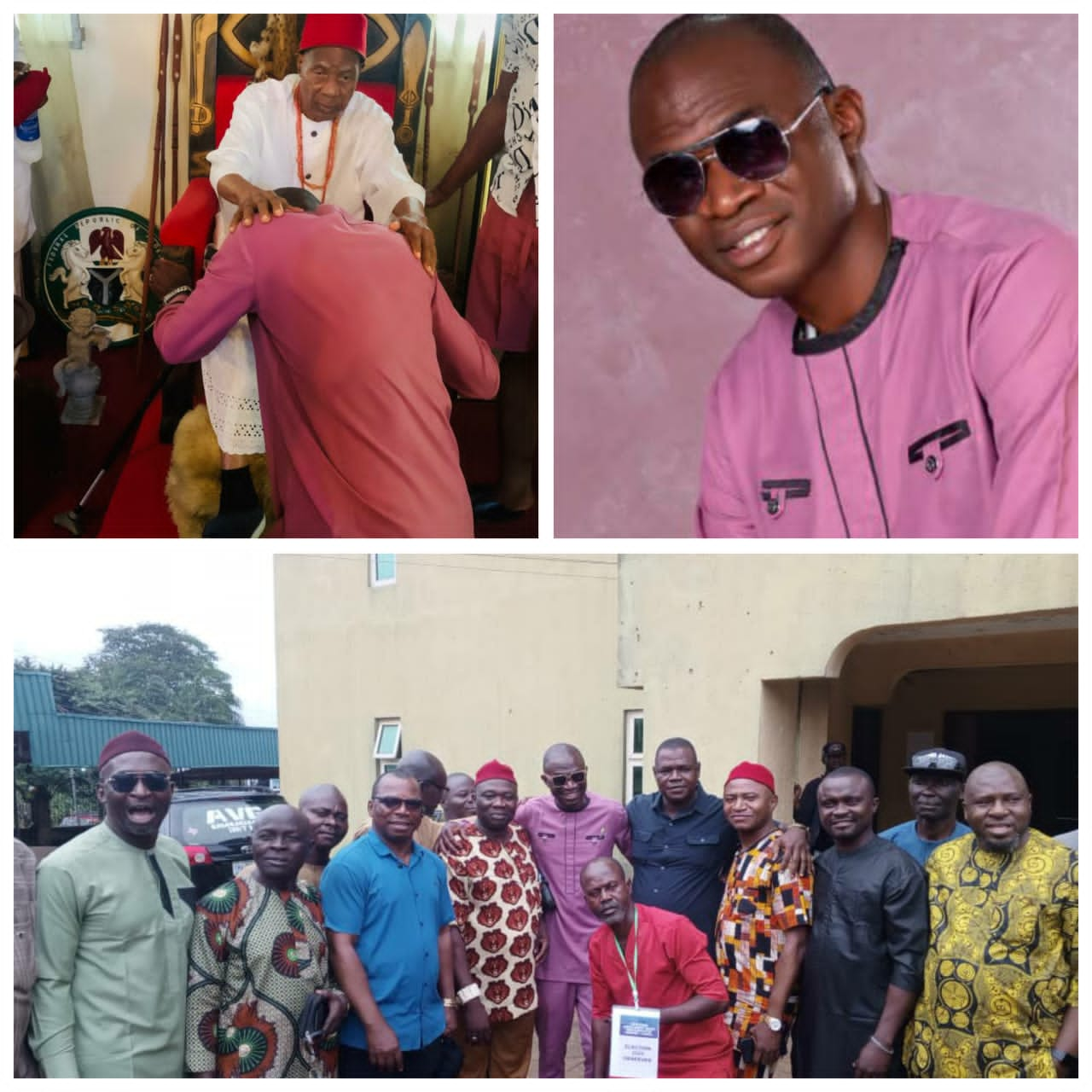In a landmark display of technological innovation and continental collaboration, Solewant Technologies Limited emerged as a standout participant at the 2025 Intra-African Trade Fair (IATF), held from September 4 to 10 in Algiers, Algeria. The event, organized under the auspices of the African Export-Import Bank (Afreximbank) and the African Union (AU), served as a pivotal platform for African businesses to forge partnerships, showcase advancements, and drive intra-African trade towards the ambitious goals set by the African Continental Free Trade Area (AfCFTA). Amidst a vibrant assembly of over 1,500 exhibitors from across the continent and beyond, Solewant captivated audiences with its array of cutting-edge energy solutions, underscoring the company’s commitment to sustainable development and energy accessibility in Africa.
The IATF 2025, marking its third edition, was more than just an exhibition; it was a catalyst for economic transformation. With the theme “Building Synergies for African Value Addition and Sustainability,” the fair emphasized the need for value-added industries, green technologies, and resilient supply chains. Attendees, including policymakers, investors, and entrepreneurs from 54 African nations, witnessed how companies like Solewant are positioning Africa as a global leader in renewable energy. Solewant’s booth, strategically located in the Energy and Sustainability Pavilion, drew crowds eager to explore solutions that address the continent’s chronic energy deficits while promoting environmental stewardship.
Solewant Technologies, a Nigerian-based firm founded in 2018, has rapidly ascended as a beacon of innovation in the renewable energy sector. Specializing in solar photovoltaic (PV) systems, energy storage, and smart grid technologies, the company has been instrumental in powering off-grid communities, industrial operations, and urban infrastructures across West Africa. At IATF 2025, Solewant didn’t just participate; it led the charge in demonstrating how African ingenuity can solve African problems. The company’s delegation, led by CEO Dr. Aisha Bello, presented a suite of products that blend affordability, scalability, and efficiency, tailored to the diverse needs of African markets.
One of the highlights was Solewant’s flagship Solar Hybrid Microgrid System, a modular solution designed for remote and underserved areas. This system integrates high-efficiency solar panels with advanced lithium-iron-phosphate (LiFePO4) battery storage and intelligent inverters, ensuring uninterrupted power supply even during cloudy days or peak demand periods. “In Africa, where over 600 million people lack access to reliable electricity, innovations like our microgrid are not luxuries but necessities,” Dr. Bello remarked during a panel discussion on Day 2 of the fair. She highlighted how the system has already been deployed in rural Nigerian villages, reducing reliance on diesel generators by 80% and slashing operational costs for local farmers and schools.
The microgrid’s appeal extended beyond its technical prowess. Solewant emphasized its ease of installation and maintenance, features that resonate in regions with limited skilled labor. Each unit can be scaled from 5kW for small households to 100kW for community hubs, making it versatile for applications ranging from agricultural irrigation to healthcare facilities. At the booth, live demonstrations showcased the system’s real-time monitoring via a user-friendly mobile app, allowing operators to track energy production, consumption, and battery health remotely. This IoT-enabled feature not only optimizes performance but also prevents theft and downtime, critical concerns in many African contexts.
Complementing the microgrid was Solewant’s next-generation Solar PV Modules, boasting conversion efficiencies exceeding 22%. These panels, manufactured using perovskite-silicon tandem technology, represent a leap forward from traditional silicon-only cells. The innovation lies in their durability—tested to withstand harsh tropical climates, including high humidity and dust storms prevalent in the Sahel region. Solewant’s engineers explained that the modules incorporate anti-soiling coatings and bifacial designs, capturing sunlight from both sides to boost output by up to 30%. For investors scouting the fair, this translated to quicker return on investment, with payback periods as short as 3-5 years in sunny locales like Algeria or Kenya.
Another crowd-pleaser was the Energy Storage Optimizer (ESO), a compact device that enhances battery longevity and efficiency in hybrid systems. Drawing from AI algorithms, the ESO predicts usage patterns and dynamically balances load distribution, extending battery life by 50% compared to standard setups. This was particularly relevant for industrial exhibitors at IATF, who discussed integrating ESO into manufacturing plants to cut energy bills amid rising global fossil fuel prices. Solewant’s presentation included case studies from Ghanaian textile factories, where ESO implementation led to a 40% reduction in energy waste, fostering sustainable operations aligned with AfCFTA’s green trade protocols.
Solewant’s showcase wasn’t isolated to hardware; the company also unveiled its Smart Grid Management Platform, a software suite that orchestrates energy flow across distributed networks. In an era where Africa’s energy demand is projected to triple by 2050, according to the International Renewable Energy Agency (IRENA), such platforms are vital for integrating renewables into national grids. The platform uses blockchain for secure transactions in peer-to-peer energy trading, empowering prosumers—households or businesses that both produce and consume power—to monetize surplus solar energy. Dr. Bello noted, “This isn’t just about generating power; it’s about democratizing it. Our platform enables communities to trade energy locally, reducing transmission losses and boosting economic inclusion.”
The significance of Solewant’s presence at IATF 2025 cannot be overstated. The fair itself generated over $3 billion in trade deals in its previous edition, and this year, energy sectors dominated negotiations. With Africa’s renewable potential estimated at 10 terawatts—enough to power the world multiple times over—events like IATF provide the matchmaking needed to unlock it. Solewant’s booth became a hub for B2B meetings, attracting delegates from South Africa’s Eskom, Egypt’s renewable arm, and Morocco’s green hydrogen initiatives. Partnerships announced on-site included a memorandum of understanding with Algerian firm Sonelgaz for joint microgrid pilots in the Sahara, and a distribution deal with Kenyan startup M-KOPA to expand ESO adoption in East Africa.
This international exposure aligns with Solewant’s broader mission: to bridge the energy access gap while creating jobs and fostering local manufacturing. In Nigeria, where the company is headquartered in Lagos, Solewant employs over 200 engineers and technicians, many trained through its in-house academy. The firm’s commitment to localization was evident at IATF, where it showcased components sourced from African suppliers, from Congolese cobalt for batteries to Ethiopian glass for panels. This vertical integration not only cuts costs but also complies with AfCFTA’s rules of origin, which prioritize intra-African value chains.
Dr. Bello’s keynote address on sustainable energy transitions further amplified Solewant’s impact. Titled “Powering Africa’s Future: From Innovation to Implementation,” the talk drew parallels between Solewant’s technologies and the UN Sustainable Development Goal 7 (Affordable and Clean Energy). She argued that Africa’s unique solar irradiance—averaging 5-7 kWh/m²/day—positions the continent as the next frontier for renewables, provided investments flow inward rather than to foreign monopolies. “We’ve seen too many African resources extracted without benefit. Solewant is flipping the script: our solutions are designed by Africans, for Africans, keeping value on the continent,” she asserted, earning applause from a diverse audience.
Beyond the glamour of the exhibition hall, Solewant engaged in side events that deepened its influence. At the Afreximbank-hosted Investment Forum, the company pitched for funding to scale production, securing interest from the bank’s $1 billion green energy facility. Workshops on solar installation drew young entrepreneurs, with Solewant donating training kits to participants from underrepresented regions like Central Africa. These efforts underscore a holistic approach: technology alone isn’t enough; capacity building ensures long-term adoption.
Looking ahead, Solewant’s IATF debut signals ambitious expansions. Plans include establishing assembly plants in Algeria and Rwanda by 2026, leveraging the fair’s networking to tap into the AfCFTA’s duty-free market of 1.3 billion people. The company aims to deploy 1 GW of capacity across Africa by 2030, focusing on agrivoltaics—solar setups that coexist with farming—to address food-energy nexus challenges. Challenges remain, including financing hurdles and regulatory harmonization, but Solewant’s track record—over 50MW installed in five countries—instills confidence.
The ripple effects of Solewant’s showcase extend to policy dialogues. IATF 2025 featured sessions on harmonizing renewable standards, where Solewant advocated for continent-wide certifications to ease cross-border trade. This could accelerate projects like the West African Power Pool, integrating grids from Nigeria to Senegal. Moreover, by highlighting gender-inclusive tech—40% of Solewant’s workforce is female—the company contributed to broader empowerment narratives at the fair.
In essence, Solewant’s participation at IATF 2025 was a testament to Africa’s burgeoning tech ecosystem. By unveiling solutions that are robust, inclusive, and scalable, the company not only boosted its profile but also inspired a wave of optimism for a powered-up continent. As trade deals solidify and collaborations flourish, Solewant stands poised to illuminate paths towards energy sovereignty and sustainable prosperity.
To fully appreciate Solewant’s contributions, it’s essential to delve into the broader context of Africa’s energy landscape. The continent, despite its abundant natural resources, grapples with an electrification rate of just 48%, per World Bank data. Urban areas suffer blackouts, while rural regions remain in the dark, hampering education, healthcare, and economic growth. Traditional responses, like large-scale hydro or coal plants, have faltered due to environmental concerns and geopolitical dependencies. Renewables, particularly solar, offer a paradigm shift: decentralized, clean, and rapid to deploy.
Solewant entered this arena with a vision rooted in necessity. Founded by Dr. Bello, a former MIT researcher in photovoltaics, and co-founder Engineer Tunde Adebayo, the company bootstrapped with grants from the Nigerian Renewable Energy Agency. Early projects focused on pay-as-you-go solar kits for low-income households, evolving into sophisticated systems showcased at IATF. The Solar Hybrid Microgrid, for instance, builds on lessons from pilot installations in Borno State, where it powered displacement camps post-insurgency, providing light and refrigeration for vaccines.
Technically, the microgrid’s architecture is sophisticated yet accessible. Solar arrays feed DC power to charge controllers, which regulate voltage before inversion to AC for appliances. The LiFePO4 batteries, safer than lithium-ion counterparts, offer 6,000+ cycles with minimal degradation. Integration with diesel backups ensures hybrid reliability, a nod to transitional realities in Africa. At IATF, visitors interacted with a scaled model simulating a 20kW setup, complete with LED indicators showing energy flow. Feedback was overwhelmingly positive, with one Ethiopian delegate praising its adaptability to high-altitude conditions.
The Solar PV Modules warrant closer examination. Perovskite layers, known for their low-cost fabrication, are layered atop crystalline silicon for enhanced light absorption across the spectrum. Solewant’s proprietary doping process improves stability, mitigating perovskite’s historical weakness to moisture. Field tests in humid Lagos showed only 2% efficiency drop over two years, outperforming competitors. Bifaciality allows ground-reflected light capture, ideal for agrivoltaic farms where panels shade crops, reducing water evaporation by 20-30%.
The ESO’s AI backbone, powered by machine learning models trained on African datasets, sets it apart. Unlike generic optimizers, it accounts for local variables like erratic weather or cultural usage peaks (e.g., evening lighting during festivals). In demos, it rerouted power from underused batteries to high-demand zones, illustrating microgrid equity. For industries, this means predictive maintenance, averting failures that cost African businesses billions annually.
The Smart Grid Platform introduces a digital layer. Blockchain ensures tamper-proof ledgers for energy credits, while smart contracts automate payments in mobile money. In a demo, a virtual village traded excess solar to a nearby clinic, settling in seconds. This P2P model could disrupt utilities, fostering community-owned grids. Solewant envisions it scaling to city levels, integrating with EV charging for emerging mobility trends.
IATF 2025’s backdrop amplified these innovations. Algiers, with its Mediterranean climate, hosted pavilions from AU’s Agenda 2063 pillars. Solewant’s booth featured interactive VR tours of installations, from Senegalese fisheries to Zambian mines. Networking yielded tangible outcomes: a $5 million off-take agreement with Ivory Coast’s cocoa cooperatives for irrigation solar, and tech transfer talks with South Sudan’s ministry.
Dr. Bello’s address dissected barriers: upfront costs, supply chain fragmentation, and policy silos. She proposed AfCFTA clauses mandating renewable quotas in public procurement, citing Solewant’s 100% local content in software. The talk sparked a Q&A on financing, where she touted blended models—grants plus impact investing—to de-risk projects.
Solewant’s social impact is profound. In Nigeria, microgrids have educated 10,000+ children via lit schools and enabled telemedicine in 50 clinics. Women-led enterprises, like shea butter processors in northern regions, benefit from reliable power, boosting incomes by 60%. At IATF, Solewant launched a scholarship for 20 African women in STEM, tying into the fair’s gender focus.
Challenges persist: scaling manufacturing amid raw material volatility (e.g., silicon prices) and navigating tariffs outside AfCFTA. Yet, Solewant’s IATF momentum— including endorsements from AU Commissioner Amani Abou-Zeid—positions it for growth. Future roadmaps include hydrogen integration and AI-driven predictive analytics.
Ultimately, Solewant’s showcase at IATF 2025 illuminates a brighter horizon. By merging tech with empathy, it exemplifies how African firms can lead global sustainability, turning energy poverty into empowerment. As the fair concludes, the seeds of collaboration planted in Algiers promise a powered, prosperous Africa.
Expanding on the event’s ecosystem, IATF 2025 featured over 50,000 visitors, with energy deals totaling $500 million on preliminary reports. Solewant’s role in this tapestry highlights synergies: its microgrids complement North African solar farms, while ESO optimizes South African wind-solar hybrids. Cross-continental ties, like with Namibia’s green hydrogen hub, could export Solewant tech for electrolyzers.
From an economic lens, Solewant’s innovations spur multiplier effects. Each MW installed creates 20 jobs in installation and 10 in maintenance, per IRENA. In Nigeria, this translates to GDP uplift via reduced imports ($2 billion annually on generators). AfCFTA amplifies this, with zero tariffs enabling Solewant to compete in a $100 billion African energy market.
Environmentally, the shift is seismic. Solewant’s systems avert 1 ton of CO2 per MWh, aiding Paris Agreement goals. In biodiversity hotspots like the Congo Basin, off-grid solar curtails deforestation from wood fuels. The company’s lifecycle assessments, presented at IATF, show 90% recyclability, closing the loop on e-waste.
Socially, empowerment narratives abound. In matriarchal societies, solar control empowers women, reducing time on fuel collection (2-5 hours daily). Solewant’s community ownership models ensure equitable benefits, countering elite capture.
Policy-wise, IATF dialogues influenced Solewant’s advocacy. Pushing for feed-in tariffs and net metering, the company eyes national grids. International partners, like EU’s Global Gateway, could fund expansions.
Looking to 2030, Solewant targets 500MW in West Africa, 300MW in East, via hubs in strategic nodes. R&D pipelines include floating solar for hydropower reservoirs and nano-enhanced panels for urban rooftops.
In retrospect, Solewant’s IATF triumph reaffirms Africa’s agency. From Lagos labs to Algerian stages, it’s proving that homegrown solutions can light the way forward, fostering a united, energized continent.



